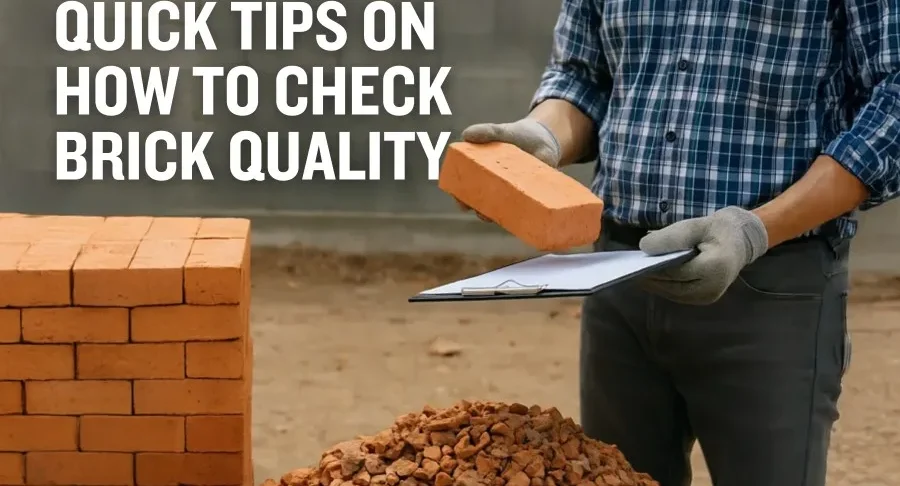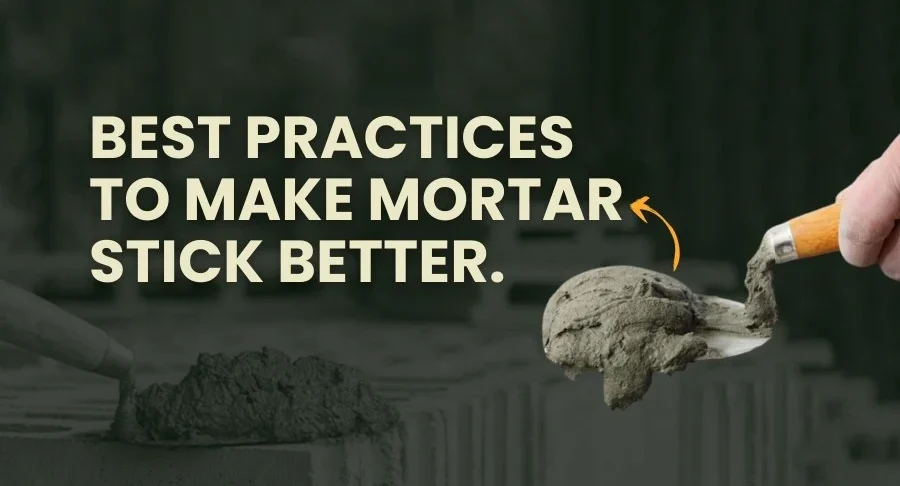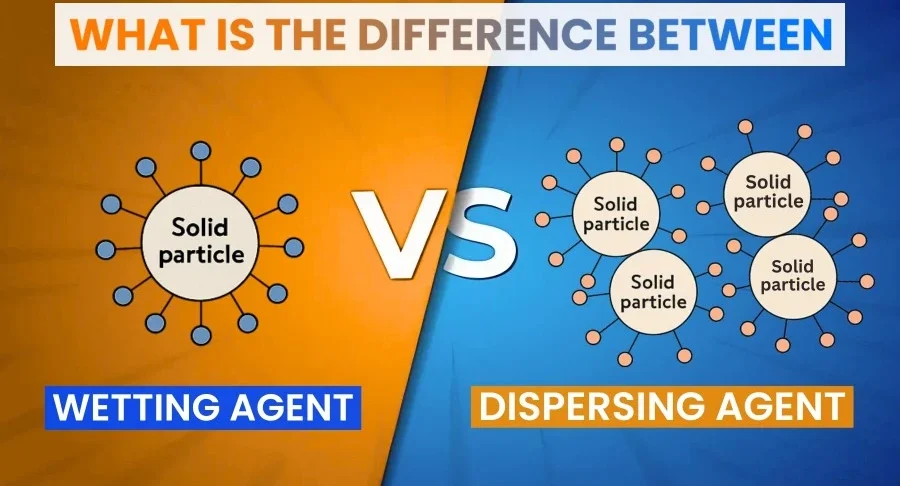Quality of bricks matters when it comes to constructing solid and lasting architectural products, as bricks form the basis for walls, columns, and buildings. Even slight compromises in brick quali...
Fly Ash Bricks Vs. Red Bricks: Making the Right Choice for Your Home
Choosing the right bricks can be one of the most crucial decisions you make when planning your dream home. Bricks are the backbone of your structure, and their quality is crucial because it affects ev...
Advantages of Using Premium Quality Wall Putty in Construction
Walls, when building or renovating a space they shape can go a long way to set the right tone. Smooth, durable, and long-lasting walls not only add an accent but also speak to the work of construction...
Exploring the Uses and Benefits of Cement Grade Gypsum in Construction
Construction has changed a lot in recent years - from mud walls to concrete skyscrapers, there's been progress. At the center of this evolution is the ability to use materials intelligently that provi...
Wall Putty: Perfecting Interiors with Strength & Finish
Homeowners and businesses alike often look at the top coats of paint, textures, and design elements as the standout features of new interiors or renovations, when in fact, the one thing that makes wal...
Introduction to Cementitious Waterproofing Membranes
Concrete is often considered one of the most durable materials for building things. Skyscrapers, bridges, tunnels, and basements are a few examples of how crucial concrete is to today's built environm...
HPMC In Food Industry: Safety functionality and benefits
Introduction In the food industry, Hydroxypropyl methylcellulose (HPMC) is widely used as a food additive. It is derived from plant-based natural fiber, which is a cellulose-based additive. It i...
What is Water Repellent Agent and its Advantages?
Water is one of the most problematic aspects of construction. Seepage can lead to damp walls, and uncontrolled water penetration can lead to weak structures, expensive aesthetic repairs, and ongoing m...
The Role of RDP and Cellulose Ether in Tile Adhesive
Tile adhesives have become a whole new world in construction and are the answer to modern flooring and wall tiling demands. Whether you are working with ceramic, vitrified, or natural stone, the succe...
Benefits of Using Polycarboxylate Superplasticizer in Bridge Construction
When it comes to the bridges we know of today, we tend to think of them as great engineering feats that link our cities, communities, and economies together. Ranging from iconic cable-stayed mega...
Reducing Cement in Concrete Mixes with Polycarboxylate Superplasticizers
Concrete is the foundation of most of the world's infrastructure: skyscrapers, bridges, dams, highways, etc. Concrete provides the structure for almost all forms of construction. However, there is...
Future Challenges in Polycarboxylate Superplasticizer Technology
There have been incredible advancements in the construction chemical industry over the previous decades, specifically within the concrete and admixture industry. Innovations in concrete technology...
What are the Advantages of Cellulose Ether in the Paint & Coatings?
The paints and coatings industry is experiencing a great deal of change for 3 reasons. Customer expectations have shifted, and customers demand a smoother finish, respect for the environment, and dura...
Polyvinyl Alcohol (PVA): Properties, Applications, and Benefits
Polyvinyl Alcohol (PVA) has become one of the most flexible and valuable synthetic polymers in the industries of modern construction and industrial chemistry. PVA is useful in construction, but als...
What is the Difference Between Carboxymethyl Cellulose (CMC) and Polyanionic Cellulose (PAC)?
In a rapidly changing industrial and construction environment, chemical additives play an important role in improving strength, durability, and other material performance characteristics. Within t...
Is HPMC Safe for Human Use?
Hydroxypropyl methylcellulose, or HPMC, is one of those products in many types of products than most people realize. It is found in capsules, tablets, oral suspensions, and even eye drops. It seld...
Factors Influencing Air Entraining Properties of HPMC
In the construction industry, Hydroxypropyl Methylcellulose (HPMC) is an essential additive, widely used in dry mix mortar, tile adhesives, wall putty, plasters, and cement-based coatings. One of...
Best Practices to Make Mortar Stick Better
Mortar is the silent partner of construction. It holds bricks, locks down tiles, and maintains the integrity of structures for years. Unfortunately for builders and masons, one of the most common...
HPMC Capsules: Why They Are Gaining Popularity in the Supplement Industry
Introduction There has been a rapid shift in the supplement industry, largely driven by the complex and continuously evolving demands of customers, such as plant-based & cleaner choices. Int...
Advantages and Disadvantages of Gypsum Plaster in Modern Construction
Gypsum plaster is a modern construction material that has increasingly gained popularity as an interior finish. It is regarded for its smooth finish, quick application, environmentally friendly nature...
Effect of the Addition of Polypropylene Fiber on Concrete Properties
Concrete now encompasses more than its original mixture of cement, sand, and aggregate. With the expanding demands of construction, the performance of concrete required improvement. Specifically,...
Why Synthetic Fibers for Concrete Are the Future of Construction?
Introduction Concrete has been a foundational building material used for construction for hundreds of years. As strong as concrete is, it has its flaws (cracks, shrinkage, and overall deterioration...
How to Choose the Right Grade of HPMC for Pharmaceutical Applications?
In pharmaceuticals, nothing is more important than precision. From the choice of active ingredients to excipients, everything is important to the safety, efficacy, and stability of the finished produc...
What is the Difference Between Wetting Agent & Dispersing Agent?
In industries such as paints, coatings, textiles, and pharmaceuticals, getting the interaction between liquid and solids precisely right can make a significant impact on product performance and qualit...
Precast Industrial Building Systems for Quality and Faster Construction
Introduction In today's industrial world of "speed" and "quality", construction projects on a major scale require speed and quality; as we all know, delay can be costly, and inconsistencies in the...
Reinforcing Industrial Floors with Synthetic Polypropylene Fibers
The reliability and durability of industrial flooring in high-traffic facilities (manufacturing, warehouses, and distribution centers) are of great importance. Industrial floors receive stress from he...
Why Add Silica Fume in Concrete? Its Advantages and Applications
Concrete is already one of the most popular building materials in construction. But while regular concrete may suffice when it comes to strength, resistance to the elements, and durability, when we wa...
How Can Waterproofing Improve the Lifespan of Your Buildings Foundation?
A building’s foundation is similar to a heartbeat in that it is invisible and its impact isn't noticed; however, it is vital to all of the structures established building surrounding it. Foundat...
HPMC Applications Across Industries: From Pharmaceuticals to Architecture
Hydroxypropyl methylcellulose (HPMC) may appear as a substance only to be found in a chemist’s reference book; it is, in fact, a material that can help improve our lives quietly in a variety of day-...
Improving Concrete Durability and Setting Time with Accelerating Admixtures
Introduction In the construction industry, where time is money and strength is king, we can agree that nothing is more important than concrete needing to set quickly and strength must last for year...






























